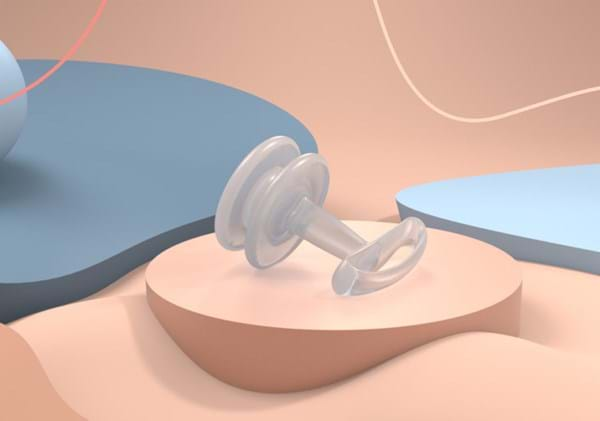Your bowel health
Elaine Miller - part 4
Bowel health and pelvic floors are linked.
Lots of women who come to clinic for help with urinary incontinence are constipated.
A full rectum pokes and irritates a bladder, and so you are more likely to wet yourself if you are constipated (1). Straining on the toilet is also linked to vaginal prolapse. (2)
We know that most people find talking about urinary incontinence awkward – to which bowel leaking says “hold my beer” (3) Fewer things impact on your life more than not having confidence that you won’t have a poo accident on the bus, at work or during intimate moments with your partner. (4)
Of course, most of us feel awkward talking about poo, which means that many of us don’t know what normal is!
Which of these is normal?
- Pooing x3/day
- Pooing x1/day
- Pooing x3/week (5)
The answer is – all of them, some people poo lots and some people not so frequently. Good bowel function isn’t just about how often you go, it’s about what the poo is like and how easy it is to pass.
You should be able to:
- “Hold on” after you feel the first urge to go until you can find a toilet.
- Take about a minute to have a poo, without pain or having to strain to pass it.
- Your bowel should completely empty, you shouldn’t feel like anything is left behind.
When your bowel tells you to go to the toilet, listen to it. Your colon absorbs water from your waste, so repeatedly deferring going to the toilet can make your poo hard and uncomfortable – which can cause constipation.
Straining on the toilet is the number one cause of vaginal prolapse.
Leaking of poo or farts is not normal, but neither is uncommon. About 1:10 people who live in the community have problems controlling their bowels. However, it is very difficult to get true figures as most people when asked “excuse me, do you poo yourself?” tend to say “no”. Sometimes that is related to a birth injury if you had a 3rd or 4th-degree tear, you are more likely to have problems controlling faeces or wind. I.B.S. or other bowel conditions can cause issues with leaking, as can being constipated. (6)
You should not put up with bowel leaking, if it is not related to a short-term tummy bug, it is not normal and can be treated.
Good habits matter. Your bowel is stimulated after a meal, so sit on the toilet after breakfast. Put your feet on a small stool, it is easier to pass a poo if your knees are higher than your hips. Lean forward with your elbows on your knees and let your belly relax and bulge. When you feel the poo coming, brace your tummy and sigh out, hiss like a snake or make an “ugh” sound. It’s a lot to remember – but “big belly, hard belly, moo like a cow”. Do some pelvic floor contractions when you have finished, to make sure you have fully emptied. (7)
Talk to your G.P., practice nurse or pelvic physiotherapist for help.
We will want to know:
- When you started having bowel leaking.
- How often it happens.
- What makes it better and what makes it worse.
- What you have tried to manage it.
- How it affects your everyday life.
It is worth keeping a bowel diary, note down when you go, whether it is difficult, when you have accidents, and what the poo looks like. Yes, really. The Bristol Stool Scale is used to classify poo and monitor bowel health and function: (see image here)
Type 1 separate, hard lumps – difficult or painful to pass, looks like rabbit droppings.
Type 2 sausage-shaped, but lumpy, like a crispy chocolate cake.
Type 3 sausage-like, has cracks on the surface.
Type 4 smooth and soft, shaped like a sausage.
Type 5 soft blobs with definite edges – easy to pass, looks like chicken nuggets.
Type 6 fluffy blobs with ragged edges, like porridge.
Type 7 watery, no solid pieces, like gravy.
Types 3-4 are ideal (8)
Which type was your last poo? Did you even look? You will next time…
The main thing to recognise is that lots of things can cause bowel incontinence: Weak pelvic floor muscles, previous injury, surgery or radiation therapy, bowel disorders, diarrhoea or constipation. While it is common, it is not normal. You don’t need to put up with it.
Hip Hip Poo Ray!
REFS:
(1) Panayi, D.C., Khullar, V., Digesu, G.A., Spiteri, M., Hendricken, C. and Fernando, R. (2011), Rectal distension: The effect on bladder function.Neurourol. Urodyn., 30: 344–347. doi: 10.1002/nau.20944
(2) Am J Obstet Gynecol. 2005 May;192(5):1516-22. doi: 10.1016/j.ajog.2004.11.040. Pelvic Organ Support Study (POSST) and Bowel Symptoms: Straining at Stool Is Associated With Perineal and Anterior Vaginal Descent in a General Gynecologic Population Margie A Kahn 1 , Carmen Radecki Breitkopf, Michael T Valley, Patrick J Woodman, Amy L O’Boyle, Deirdre I Bland, Joesph I Schaffer, James J Grady, Steven E Swift
(3) Only 1:3 people with fecal incontinence seek help https://www.ncbi.nlm.nih.gov/m/pubmed/23442502/
(4) Womens Health (Lond Engl). 2015 Mar; 11(2): 225–238.doi: 10.2217/whe.14.66 Impact of Fecal Incontinence and Its Treatment on Quality of Life in Women Isuzu Meyer, MD and Holly E. Richter, PhD, MD
(5)Heaton KW, Radvan J, Cripps H, Mountford RA, Braddon FE, Hughes AO. Defecation frequency and timing, and stool form in the general population: a prospective study. Gut. 1992;33(6):818-824. [Cited 31 July 2018] Available from: https://gut.bmj.com/content/33/6/818
(6) Am J Gastroenterol. 2015 Jan; 110(1): 127–136. Epidemiology, pathophysiology, and classification of fecal incontinence: State of the Science Summary for the National Institute of Diabetes and Digestive and Kidney Diseases (NIDDK) Workshop Adil E. Bharucha, M.B.B.S., M.D.,1 Gena Dunivan, M.D.,2 Patricia S. Goode, M.S.N., M.D.,3 Emily S. Lukacz, M.D., M.A.S.,4 Alayne D. Markland, D.O., M.Sc.,3 Catherine A. Matthews, M.D.,5 Louise Mott, R.N,6 Rebecca G. Rogers, M.D,2 Alan R. Zinsmeister, PhD,7 William E. Whitehead, Ph.D.,5,8 Satish S.C. Rao, MD, PhD,9 and Frank A. Hamilton, M.D.10
(7) https://pubmed.ncbi.nlm.nih.gov/12870773/ 2003 Jul;48(7):1201-5. doi: 10.1023/a:1024180319005. Comparison of Straining During Defecation in Three Positions: Results and Implications for Human Health Dov Sikirov
(8)Bristol Stool chart: Lewis SJ, Heaton KW (1997) Stool form scale as a useful guide to intestinal transit time. Scandinavian Jorunal of Gastroenterology 32: 920–4



